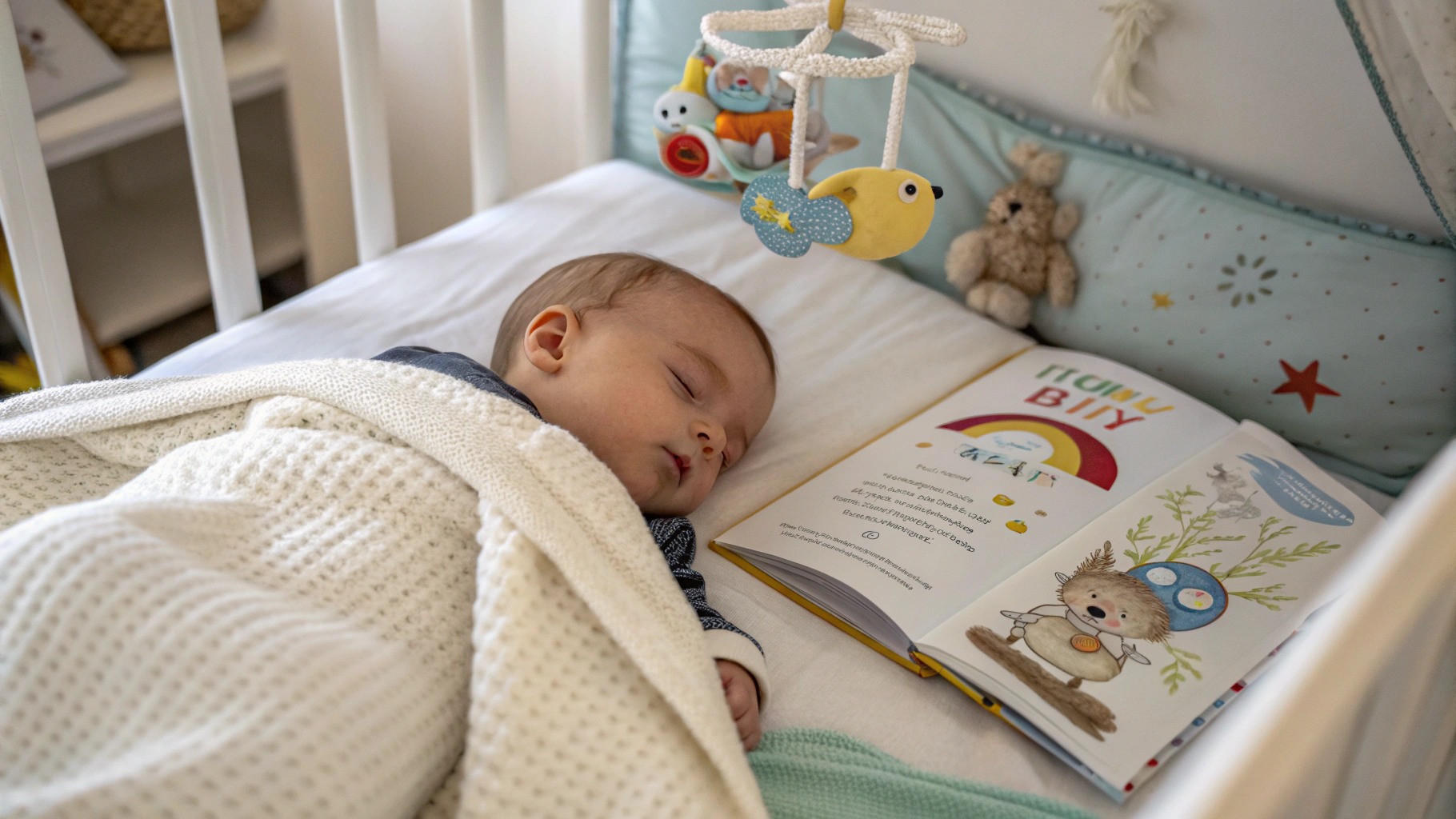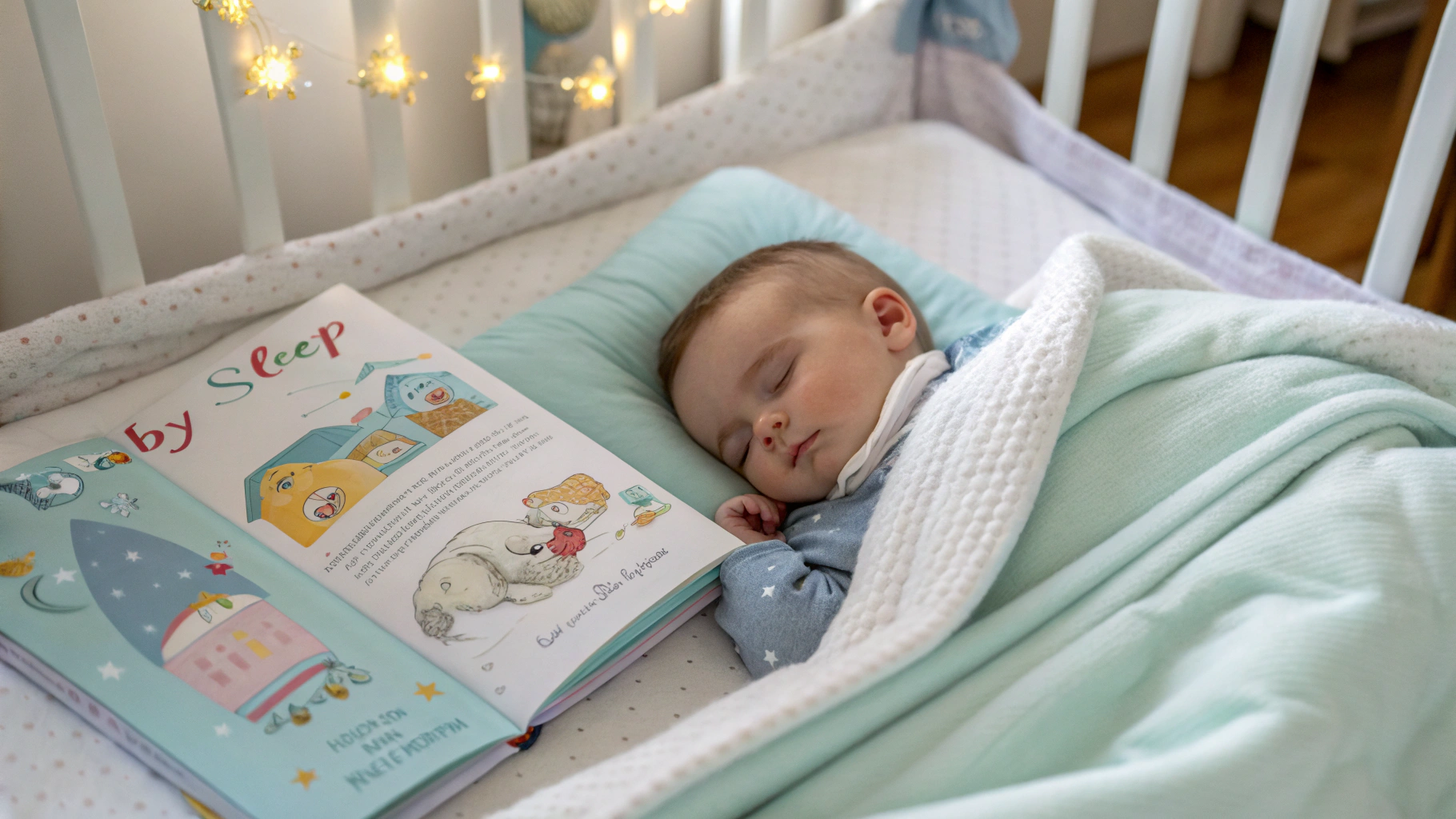I still remember those first few months with my little one—nights that felt endless, the clock ticking at 3 a.m., and both of us in tears because sleep just wouldn’t come. In that haze of exhaustion, I stumbled upon a baby sleep book that changed so much for me. Not because it was a miracle cure (spoiler: there’s no one-size-fits-all), but because it gave me strategies, reassurance, and hope. If you’re here, chances are you’re searching for the same.
This post is your comprehensive guide to making sense of the booming world of infant sleep books, why they matter, and which ones are worth pulling off the shelf (or adding to your Amazon cart at 2 a.m. while rocking your baby).
Table of Contents
Why Baby Sleep Books Matter
If you’re anything like me, chances are you’ve googled “why won’t my baby sleep?” at least 100 times. Sleep is one of the biggest challenges for new parents; studies show that the average new parent loses about 44 days of sleep in the first year alone. That’s almost a month and a half of being tired and foggy!
Now, here’s the thing: every baby is different. But what a good baby sleep book does is give you a toolkit of strategies. Instead of guessing, you’ll have researched, parent-tested methods at your fingertips. And just as importantly, these books remind you that you aren’t alone—sleep struggles are universal.
They matter because they provide:
- Consistency: Babies thrive on predictable routines.
- Confidence: No more “am I getting this wrong?” panic at 4 a.m.
- Options: From gentle, no-cry approaches to structured schedules, there’s a fit for every parenting style.
Key Tips From Infant Sleep Experts
Understanding Baby Sleep Cycles
Infants don’t sleep like adults. Their sleep cycles are shorter (about 50–60 minutes compared to our 90), which is why they wake more often. Knowing this can save your sanity—it’s normal, not a reflection of your parenting skills.
Setting Sleep-Friendly Routines
One theme that comes up again and again in infant sleep books is bedtime routines. Simple cues (like dimming lights, using white noise, or reading a quiet story) signal to babies that sleep is on the horizon. It doesn’t need to be complicated—bath, feed, snuggle. Done.
The Role of Environment
Blackout curtains, a consistent sleep space, and the right temperature (studies recommend between 68–72°F) can dramatically improve sleep patterns. Think of it like setting the stage—your baby is the actor, but you control the lighting.
Top Picks – Baby Sleep Books Worth Considering
Alright, let’s get real. I’ve personally read several (during desperate, sleep-deprived nights), and here are a few favorites with pros and cons.

1. “The Happiest Baby on the Block” by Dr. Harvey Karp
Pros: Famous for the “5 S’s” soothing method. Practical, easy-to-remember techniques.
Cons: Some parents feel it’s more about newborn soothing than long-term sleep solutions.
2. “Healthy Sleep Habits, Happy Child” by Dr. Marc Weissbluth
Pros: Data-driven, medically rooted advice. Lots of detail for different stages.
Cons: Can feel overwhelming—almost textbook-like.
3. “The No-Cry Sleep Solution” by Elizabeth Pantley
Pros: Perfect if you lean toward gentle parenting. Empathetic, actionable strategies.
Cons: Some parents find gentler methods take longer to see results.
4. “Solve Your Child’s Sleep Problems” by Dr. Richard Ferber
Pros: Straightforward explanations, the original source of “Ferberizing.”
Cons: Controversial if you’re not comfortable with any cry-it-out approaches.
Practical Advice: How to Apply Lessons From Baby Sleep Books
Theory is nice… but when the rubber meets the road, how do you actually use these books without going cross-eyed?
- Pick One Approach at a Time – Mixing strategies from three different books usually equals confusion (for baby and for you). Commit to testing one method for at least 1–2 weeks.
- Adjust for Personality – Some babies do better with structured schedules, others need flexibility. Observe, tweak, and adjust to fit your child’s temperament.
- Keep a Sleep Log – Write down wake times, nap lengths, and bedtime routines. Patterns will emerge—trust me, this was my game-changer.
- Involve Your Partner – Consistency comes from the whole household, not just one tired parent soldiering on.
Budget Tips & DIY Sleep Solutions
Not everyone has the budget to buy stacks of books, fancy sleep aids, or pricy sleep consultants. That’s okay—you can still do plenty.
- Library First: Check your local library app. Many carry the top infant sleep books for free in eBook or audiobook form.
- Swap With Friends: New parents love to hand off what worked (or didn’t). Book swaps are underrated.
- DIY Sleep Aids: Instead of expensive gadgets, try a simple fan for white noise or rolling up a towel to tuck under a crib mattress for reflux babies (always ensuring safety).
